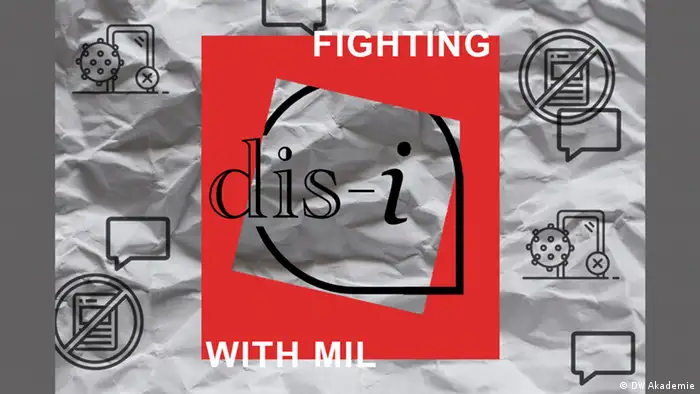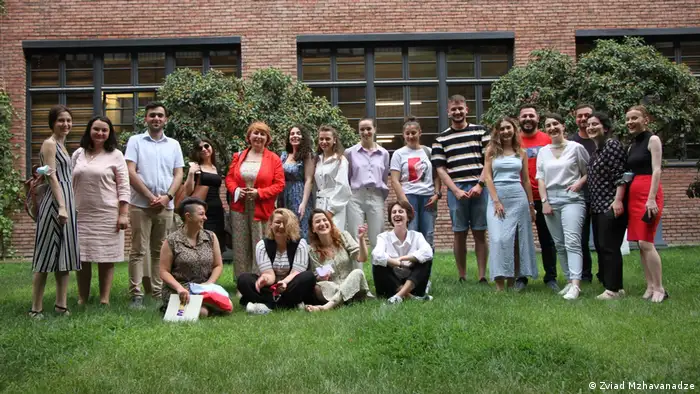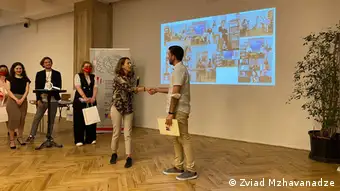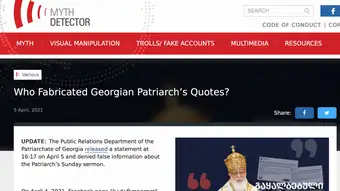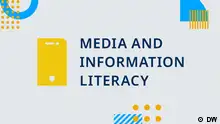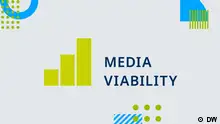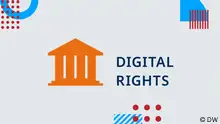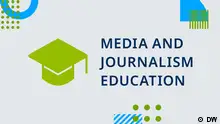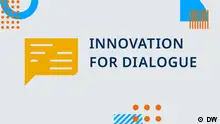MIL Week 2021
Empowering young People to fight Disinformation in Serbia, Ukraine and Georgia
Against the backdrop of a global pandemic and ever increasing amounts of disinformation, case studies from Eastern Europe show how MIL can be used for the benefit of public good and public health.
The outbreak of the COVID-19 pandemic has been accompanied by a rapid spread of disinformation and false health advice in many Eastern European countries. Information sources are rarely scrutinized, as many citizens continue to share content without considering the potentially negative ramifications of their actions. These include the amplification of disinformation surrounding vaccines1, as well as the propagation of unproven treatments2.
This article presents several case studies in which Media and Information Literacy (MIL) activities in Serbia, Ukraine, and Georgia have been used to combat the spread of disinformation on social media platforms.
Disinformation going viral – a case study from Serbia
A current study by the Novi Sad School of Journalism (NSSJ), supported by DW Akademie, shows that in Serbia, misinformation carrying positive messages has the highest “virality” factor of all other types of content on Facebook. Incorrect advice on how to cure COVID-19 virus makes up 33% of all disinformation. Some of this content was produced in Serbia, while other misinformation comes from foreign sources translated into Serbian. This is an example of disinformation on the current global pandemic not being restricted to national borders.
How can trustworthy news sources keep pace with eye-catching disinformation?
As one UNICEF study3 shows, Serbian pupils spend an average of more than three hours a day on the internet, with social media platforms serving as one of the dominant sources of information. In comparison to traditional media outlets, the innovative formats provided by social media platforms have a much higher penetration amongst young people. Realising this, the DW Akademie team and the social impact communications organisation, Propulsion, decided to collaborate with regional social media influencers to reach users in the most engaging way possible. That meant using social media platforms themselves– the very platforms on which MIL skills are needed.
Propulsion invited regionally well-known figures from the Western Balkans to a series of workshops in Sarajevo, where they learned how to detect and debunk disinformation. At the end of the training course, each influencer produced a piece of content for their social media channels in which they shared what they had learned. The hope was that young people in Serbia would engage with the content while learning about fact-checking and other MIL skills. The project took young people’s enthusiasm for social media content as a starting point from which discussions and knowledge about disinformation could be spread further into other social groups.
“Young people were empowered to use MIL skills, learning from liked and trusted personalities, who met them on eye-level.” - Ivo Matejin (Propulsion)4
Similarly, using novel formats to engage young people in learning about responsible media usage was a key topic at the fourth Brave New Media Forum (BNMF). The event was organised by DW Akademie and brought together media professionals and YouTube stars and young people to discuss the impact of the current pandemic. Broadcasted from Serbia, but focused on the entire Western Balkans region, international speakers and participants shared their views on hate speech, disinformation, and freedom of speech.
Changing atmosphere of public dialogue
The problem of disinformation is similarly prevalent in Ukraine. With the support of DW Akademie, the NGO, Inisha Osvita, and the Academy of the Ukrainian Press have been training MIL multipliers to improve dialogue surrounding media consumption and content production. Interestingly, MIL trainers have observed an intensification of discussions between students, with many participants being less open to accepting others’ points of view and experiences. This could be a result of the increasingly hostile online environment, segregated in filter bubbles, to which young people are exposed. This shift away from open-minded discussions, in turn, make it harder for the trainers to objectively discuss what is true and what is false, and what is news and what is opinion. To enable the MIL trainers to continuously teach MIL skills, they received special training on how to host and mediate such discussions.
Disinformation on social media platforms in Eastern Europe and globally
Facebook and Instagram have made efforts to limit the reach of disinformation by blocking links to obscure web pages and limiting content that has been identified as inaccurate by independent data verification portals, working in local languages. However, only a handful of fact-checking initiatives in Eastern Europe have the opportunity to cooperate with Facebook in this way.5 On a global scale, the platform’s efforts are “only likely to remove 10%-20% of false content”, as former Facebook employee Frances Haugen states.6
The contradictory strategy of pushing for increased traffic before removing content and blocking users can be debated as the solution for improving public dialogue. What is clear, is that the majority of disinformation does not get removed or remains undetected.
Education in MIL can exist as a parallel tool to censorship, whereby citizens are informed on the platform’s structures and functionalities while being trained in the critical thinking skills necessary to navigate our increasingly complicated digital-information ecosystem.
Georgian MIL students call for support in handling the ‘flood of information’
As is the case in other parts of Europe, false information is also a key topic for young people in Georgia. At the beginning of each of their training sessions, Media Development Fund (MDF) facilitators ask the 17 to 25-year-old participants about which media topics are most important to them. Among the top three topics of interest are disinformation, the “flood of information”, and (mis)trust of social media influencers. Such feedback is used as an important base on which to build future MIL training courses. Asking the participants questions also helps the trainers to stay up to date with the latest media trends among young people.
So far, more than 80 participants have been trained as part of the project Media Literacy Youth for Resilient Society, a partnership between MDF and DW Akademie. More training courses are planned for the future.
The first part of the training course aims at improving the participants' understanding of the role played by the media in democratic societies. Together with this, participants should be better equipped with critical-thinking skills aimed at analyzing the reliability of news sources and content. Attendees are also trained with multimedia production skills which contribute to their ability to join public dialogue and act upon received information. In the second part of the course, participants have the opportunity to put their new skills into practice by taking part in a competition which tasks them to create content on a specific MIL topic. In previous courses, some students chose to work on a comic book that explains MIL topics to fellow students, while others chose to fact-check specific content.
MIL students debunk disinformation
One 25-year-old participant, Davit Beradze, used his new-learned skills to debunk Georgian Catholic Patriarch Ilia II’s false statement on COVID-19 measures. After publishing the research on the website Myth Detector(part of MDF’s MIL program), Davit’s fact-checking efforts were shared by the International Fact-Checking Network (IFCN) at Poynter.
MIL as a beneficial tool for society against disinformation
In the spirit of UNESCO’s theme for this year’s Global MIL Week- “MIL for the Public Good” - MIL practitioners will continue working against the spread of disinformation by equipping citizens with the skills necessary to access, analyse, create, reflect, and act upon media. The MIL activities showcased in Serbia, Ukraine and Moldova are examples of how citizens can be empowered to navigate the increasing complexities of the digital media landscape while counteracting disinformation.
WWW links
- Date 24.10.2021
- Author Hanna Hempel
- Feedback: Send us your feedback.
- Print Print this page
- Permalink https://p.dw.com/p/426Mx
- Date 24.10.2021
- Author Hanna Hempel
- Send us your feedback.
- Print Print this page
- Permalink https://p.dw.com/p/426Mx

